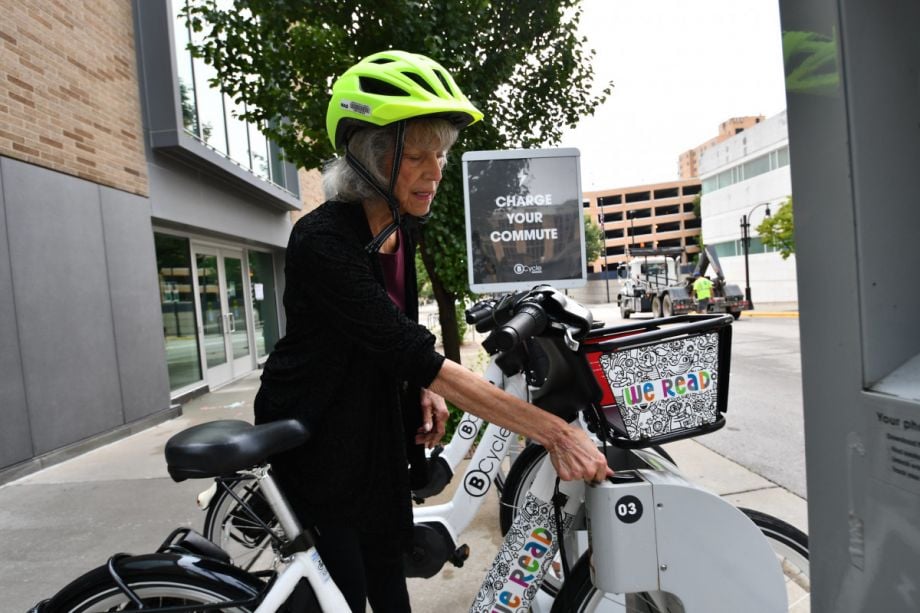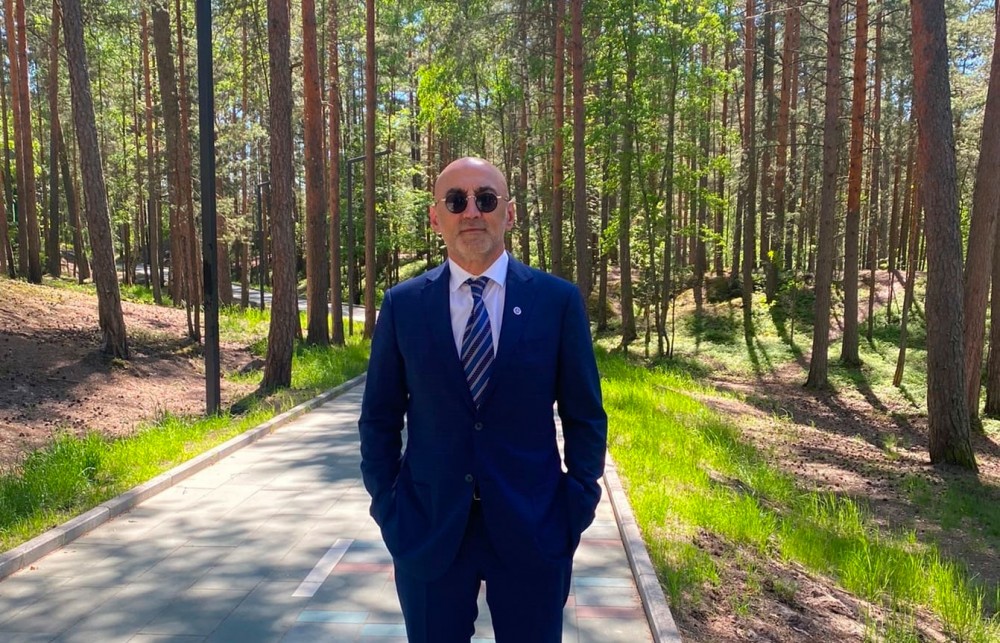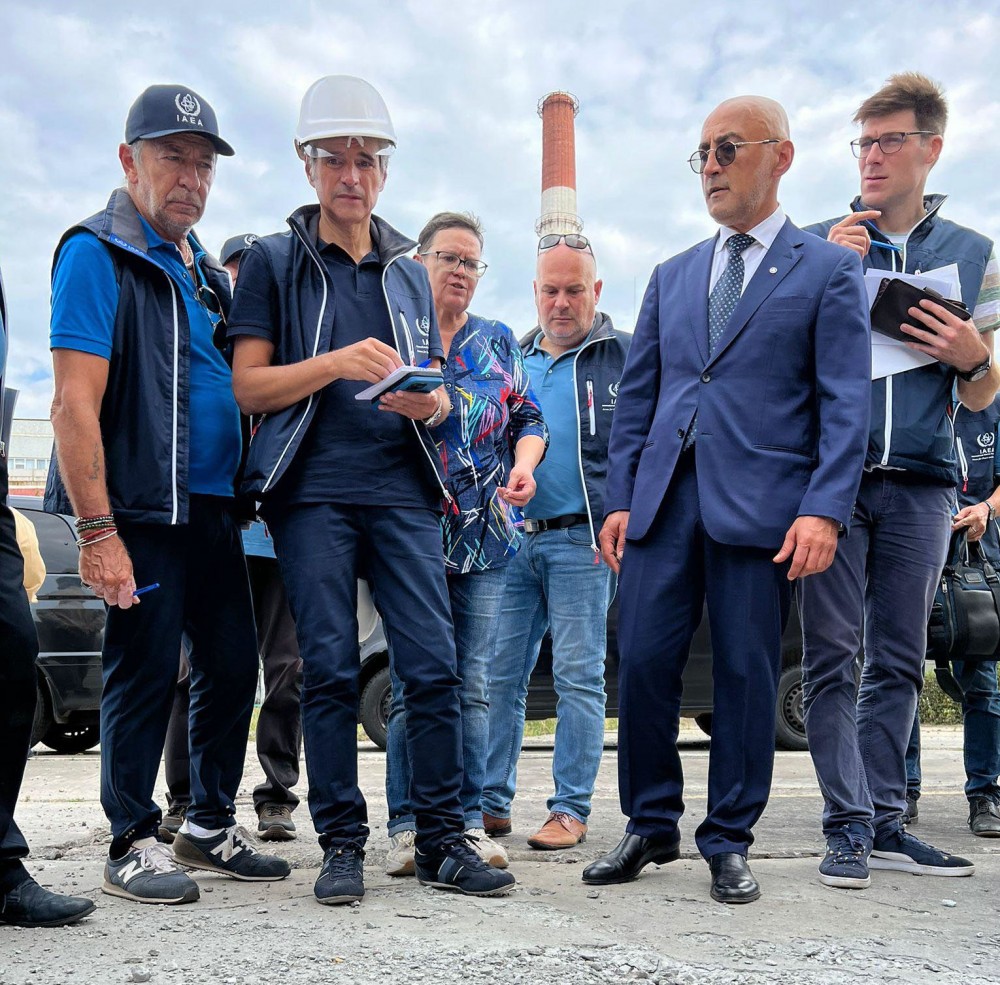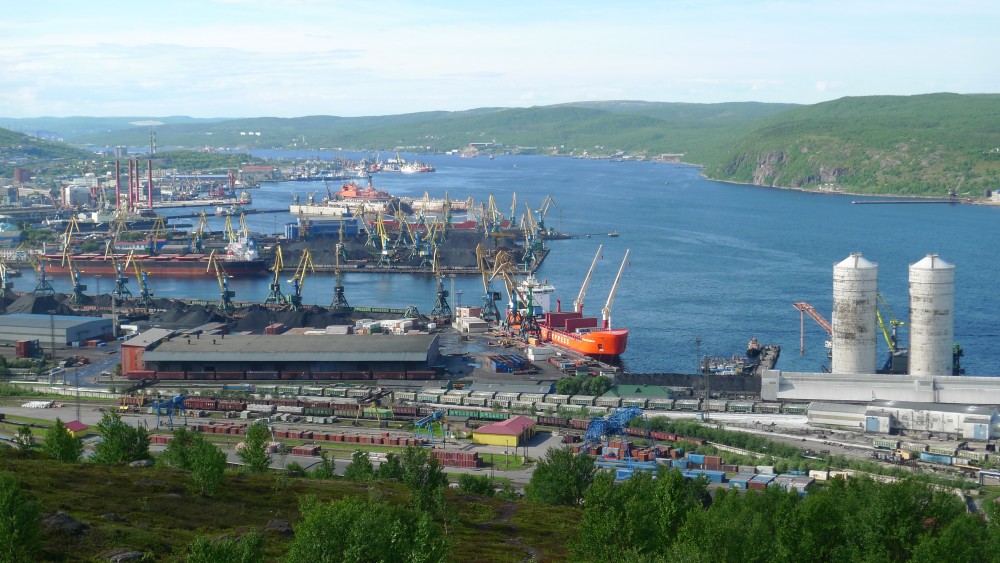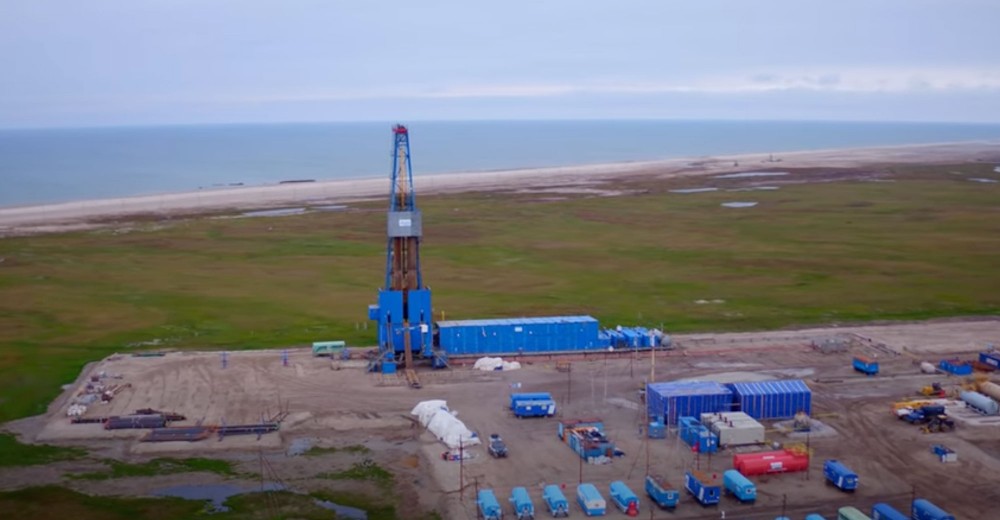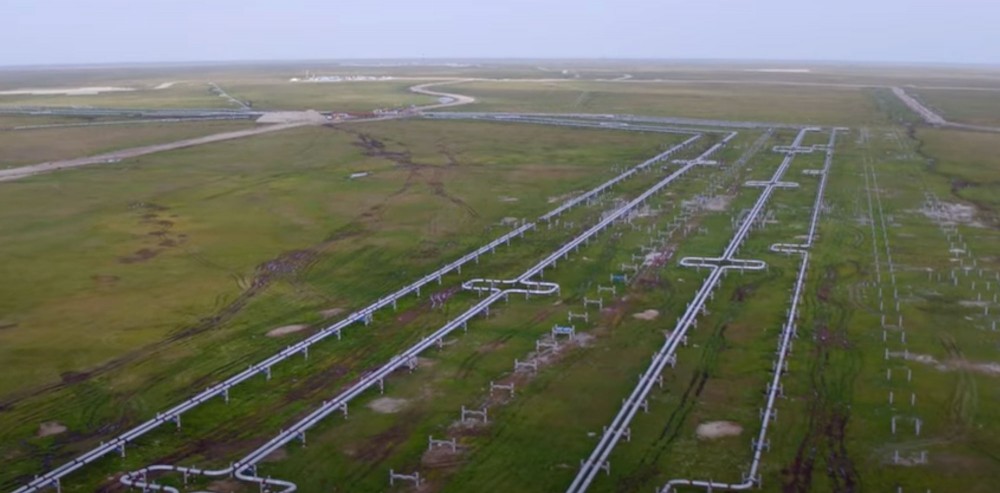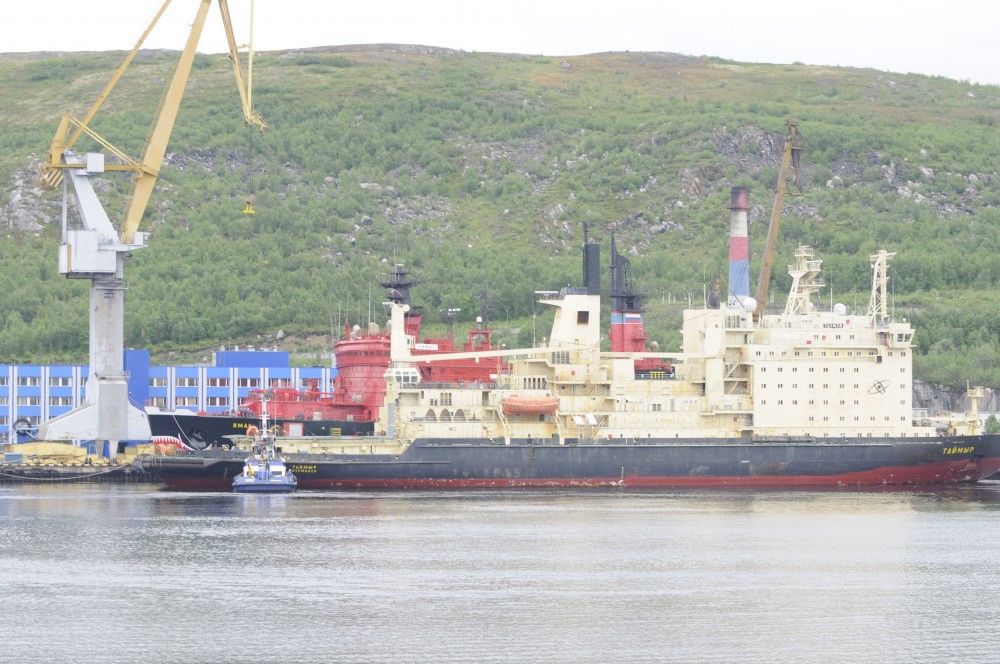Amy Goodman, Democracy Now!
October 24, 2022

Child drinking water - Shutterstock
The Environmental Protection Agency is launching a civil rights investigation into whether the state of Mississippi discriminated against the majority-Black capital of Jackson when it refused to use federal funds to address the city’s dangerous water crisis. Mississippi has received federal funds to address drinking water needs since 1996 but distributed funds to Jackson just three times over this 26-year span. “For years, Black communities have faced intentional disinvestment” in water infrastructure, says Abre’ Conner of the NAACP, which filed the complaint that led to the investigation. Conner says that through the creation of the EPA’s new civil rights office, the government now has “an opportunity to make right the wrongs that have happened to Black communities and to other historically disadvantaged communities for years.”
Intentional Disinvestment: EPA Launches Civil Rights Probe of Water Crisis in Jackson,
AMY GOODMAN: This is Democracy Now!, Democracynow.org, the War and Peace Report. I’m Amy Goodman, as we turn now to Jackson, Mississippi, where the Environmental Protection Agency is launching a civil rights investigation into whether Mississippi officials discriminated against Jackson’s majority-Black residents when it refused to use federal funds to address the city’s dangerous water crisis. The EPA said Thursday it is probing Mississippi’s Department of Health and Department of Environmental Quality over their role in the crisis that left tens of thousands of mostly Black households without drinking water. Jackson’s main water treatment plant was damaged after flooding in August and viral videos showed brown liquid flowing from taps. In 2021, residents lost access to drinking water for weeks after a deep winter freeze. Even when the water is running, residents have faced months’ long boil-water orders. A complaint filed by the NAACP led to the EPA’s investigation. NAACP President Derrick Johnson lives in Jackson and called the state’s record of divestment “systemic neglect.” Mississippi has received federal funds to address drinking water needs since 1996 but gave Jackson funds just three times.
For more, we’re joined from Jackson, Mississippi, by Abre’ Conner, Director of the NAACP’s Center for Environmental and Climate Justice. Welcome to Democracy Now!, Abre’. It’s great to have you with us. Why don’t you lay out the issue, including the Governor mocking Jackson for its water crisis and what Congress allocated for Jackson and yet it did not actually go there.
ABRE’ CONNER: To your point earlier about Jackson only getting federal funds three of the last 25 years, that really kind of goes to the heart of what is the issue. The water in Jackson has been weaponized against them by the governor, by the state, because often times federal funding for water infrastructure, it flows to the state first. So even though we have the promise of Justice40, we have the promise of historically disadvantaged communities like Jackson, Mississippi, to be prioritized whenever it comes to federal funding, that’s not necessarily always the case.
AMY GOODMAN: Last month, Mississippi Governor Tate Reeves came under criticism for disparaging his own capital city, Jackson. This is Reeves speaking during the groundbreaking ceremony for Jones Capital LLC headquarters.
GOVERNOR TATE REEVES: I’ve gotta tell you, it is a great day to be in Hattiesburg. It’s also, as always, a great day to not be in Jackson.
AUDIENCE: [laughter]
AMY GOODMAN: “Always a great day to not be in Jackson.” Jackson is overwhelmingly African-American, over 80% of the city. Abre’, talk about this.
ABRE’ CONNER: Governor Reeves has mocked Jackson residents. The governor at points it seems thinks that it’s a joke. That was one of the reasons why we felt like it was so important to file this Title VI complaint with the EPA. Because it’s not fair that Jackson residents for decades have seen the disinvestment in their city. It’s the state capital and it’s also 83% Black. But then you have a governor who is making comments like that and individuals don’t even trust their tap water, where they’re spending their tax dollars, where they should be able to have safe drinking water and that is not the case. But this Title VI complaint really demonstrates that we are not going to sit aside and allow for someone who is in an elected position in the state to be able to allocate federal funds to places like Jackson to get away with discriminating against a large Black city.
But this is something that Governor Reeves has been doing for a while. Even in his previous positions, like lieutenant governor, when he was treasurer, he utilized positions to try to harm Jackson residents. So this has been a long time coming. You have had a number of Black mayors who have asked the governor, who have asked the state for funding to fix the water infrastructure issues in Jackson, Mississippi, and because there has been neglect, because there has been intentional disinvestment, quite frankly, for a number of years, the number keeps growing for how much it’s going to actually cost to fix water infrastructure issues in Jackson.
This is also an issue because, again, there was supposed to have been a prioritization of funding, of federal funding, in places like Jackson, Mississippi, by the EPA, by other federal agencies, but because the money flows to the state first, then they get an opportunity to, quite frankly, weaponize these funds that are supposed to be utilized for Jackson against them.
AMY GOODMAN: Last month, Abre’ Conner, you testified at the Hearing on Water Infrastructure. In your prepared remarks, you said “The effect of climate change on Black people has finally come into national focus because Black people experience the most horrific impacts from historic disinvestment in communities.” Can you elaborate on this?
ABRE’ CONNER: What we have known is that for years, Black communities have faced intentional disinvestment. When you look at places like Allensworth that tried to build in California, in the Central Valley of California nearly 100 years ago, the reason that they weren’t able to actually move forward was because the company actually moved the wells that were supposed to be in Allensworth to Alpaugh. That was a majority non-Black neighboring city to Allensworth. We have seen this disinvestment in other Black communities. We’ve seen it in Flint. We saw the crumbling of Rosewood, for example, because the governor failed to respond in a timely manner.
Now we’re finally getting to a place where we see what is happening in Jackson. We see Congress actually also opening up an investigation with Homeland Security as well. Then we have the EPA who is opening for the first time this new external civil rights office, an Office of Environmental Justice, with Administrator Regan. But there were for years a time where the EPA was not even opening up Title VI complaints. It’s not like the environmental justice issues weren’t happening during that time. It got to a place where, quite frankly, groups felt like they needed to actually sue the EPA to get them to do their job, to help historically disadvantaged communities.
So, it is a time that we really have an opportunity to make right the wrongs that have happened to Black communities and to other historically disadvantaged communities for years. But this is really just a first step, because again, this is really an opportunity for the EPA to also demonstrate that through this complaint, it is going to prioritize the communities, it is going to prioritize community groups, who have been a part of this effort, and that we are able to actually get the resources to flow directly to Jackson, Mississippi.
AMY GOODMAN: You have a letter that was written to the governor by Democratic Representatives Bennie Thompson of Mississippi and Carolyn Maloney of New York asking how Jackson’s water system is crumbling despite Congress authorizing hundreds of millions of dollars last year to Jackson, and compare that to the white suburbs right outside Jackson.
ABRE’ CONNER: Yeah. It is shameful that the governor has not prioritized actually funding the water infrastructure that is needed in Jackson, Mississippi. In my conversations that I’ve had, not only with the current mayor but with former mayors as well, this is not something that the governor did not have notice of. There has been a long history of Black mayors actually asking the governor to fund the water infrastructure in Jackson, Mississippi.
Just as recently as last year, the governor vetoed $47 million actually going to Jackson, Mississippi, and the funding that Jackson did end up getting ended up having additional strings attached to it. So for the American Rescue Plan funding that Jackson has, it’s the only city in the state that has two different approval processes that it has to go through in order to get projects approved. It has to go through the Department of Environmental Quality and also the Department of Finance and Administration. It’s the only city in the entire state that has to go through this process. There is no actual legislative history as to why specifically only Jackson has to go through this number of processes, but it actually goes to the disinvestment that Jackson has continued to see, the number of hurdles that Jackson has to go through in order to try to rebuild.
It is not like people at the local level aren’t trying, but when they’re faced with a number of hurdles and obstacles over and over again, at the state level, again where they have hundreds of millions of dollars—with the Bipartisan Infrastructure Law, there were hundreds of millions of dollars that were placed into allocation for historically disadvantaged communities, for places like Jackson, Mississippi, and that has not happened. With the most recent Intended Use Plan that the state, for example, submitted to the EPA, it capped loan forgiveness for these infrastructure plans at $500,000, knowing that it’s going to take a lot more than that to fix the water issues in Jackson, Mississippi. The draft plan that the state actually intended to send to the EPA before [inaudible] would have completely removed Jackson from even being able to apply for the money in the Bipartisan Infrastructure Law.
So, when you see these kinds of games being played by the governor, by the state, when you have a Black community who is in the middle of a water crisis—and by the way, the most recent Intended Use Plan was submitted during the midst of this water crisis—then you know that there is a level of intentionality to every single step that Governor Reeves has taken.
AMY GOODMAN: Obviously, this reeks of Flint. It sounds so similar to Flint. We did a Democracy Now! documentary called Thirsty for Democracy looking at Flint where the activists were saying, “This is not just an environmental problem, the lack of access to clean water in Flint, Michigan, another majority Black city. This is a problem of democracy.” How will your complaint, how will your—is it called a lawsuit?—affect cities like Flint?
ABRE’ CONNER: It is an administrative complaint that you’re able to file directly with a federal agency. In this situation, we filed it with the Environmental Protection Agency, and we filed it under Title VI, for purposes of regulatory—oversee what is happening in the state.
This complaint actually is representative of the number of years that historically disadvantaged communities, number one, could not utilize the EPA to help with issues related to discrimination and environmental hazards and environmental racism. This was really an opportunity for the EPA to demonstrate to these communities that it has been silent towards for a number of years that they are also going to prioritize historically disadvantaged communities like Jackson, that they’re going to prioritize the communities that it left behind for almost a decade, and that they’re going to try to come up with a solution that is going to center Jackson residents.
We hope that this not only helps the residents in Jackson, because they have been dealing with this for years, but that it also can serve as a model for other governors who, quite frankly, have also been slow to respond to historically disadvantaged communities, to Black communities across the country, so they can understand that there is a mechanism that we can use to hold them accountable and say that we’re not going to allow for Black communities to be left behind when we understand that safe drinking water, that living in communities where we are bearing the brunt of all of this contamination, pollution, that there is going to be a mechanism that we can utilize and ensure that we are prioritized moving forward.
AMY GOODMAN: Abre’ Conner, thank you so much for being with us, Director of the NAACP Center for Environmental and Climate Justice. Next up, we go to Little Rock. We will look at how the ACLU is asking the Supreme Court to overturn an Arkansas anti-BDS law that penalizes companies that support boycotts of Israel. We will speak to the publisher of The Arkansas Times who sued the state to overturn the law. We will also be joined by the ACLU attorney who appealed to the Supreme Court and the director of the documentary Boycott. Back in 30 seconds.
